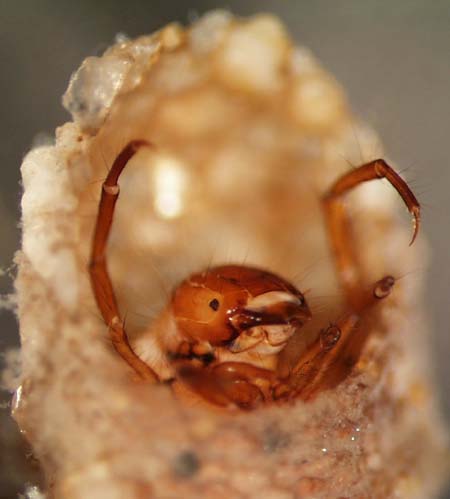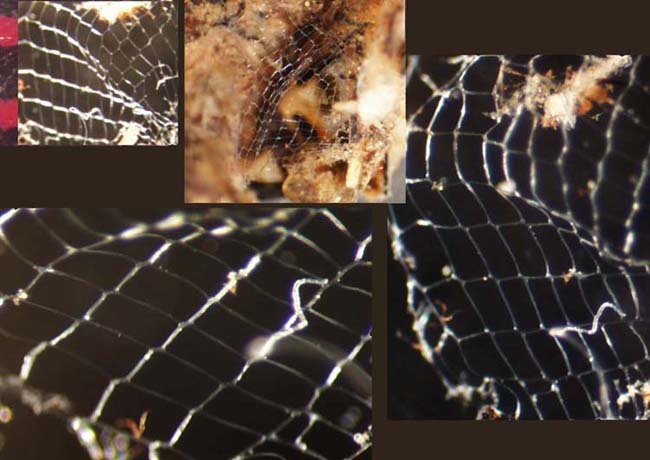
THE XERCES SOCIETY FOR INVERTEBRATE CONSERVATION Aquatic Invertebrates in Pacific Northwest Freshwater Wetlands |
Identify taxa
|
| Key to Families | |||
| Hydroptilidae (micro caddisflies or purse case makers) plate on top of each thoracic segment; abdomen generally lacks gills; prolegs short, usually reduced to small hooks; typically live in portable, purse-like cases made of fine sand grains. |
 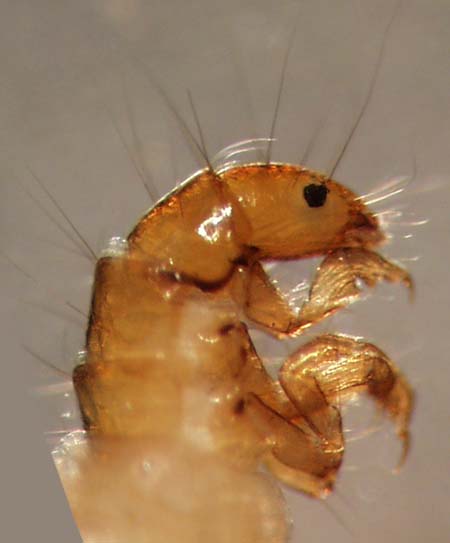 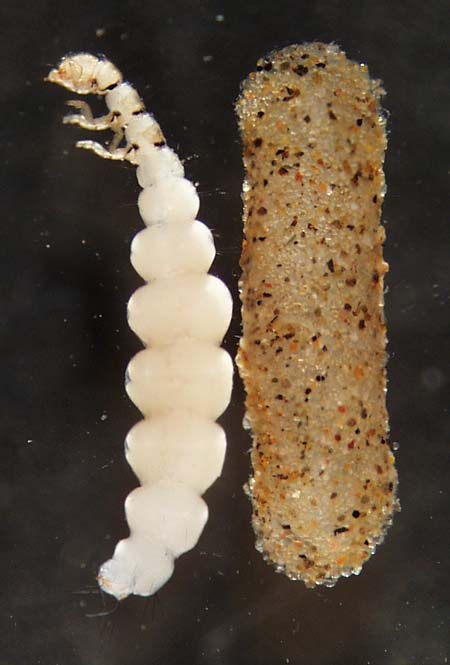  |
||
Leptoceridae |
|||
| Limnephilidae (northern case makers) construct portable cases from a variety of plant and mineral materials;cases vary in shape; larvae lack long antennae, 1st abdominal segment may have small hump on dorsal and lateral surfaces, usually also has scattered small bristles; short prolegs; plates present on all thoracic segments, but plates on 3rd thoracic segment generally very small and scattered; may have pebbly texture on head and pronotum. |
|||
| Polycentropodidae (tube-making caddisflies) larvae do not construct a portable case, and are usually captured free from their retreat; long, forward-projecting head; anal prolegs long and well developed; only the first thoracic segment is covered by a plate; body is usually pink/orange and head is usually speckled; labrum is not fleshy and T-shaped. |
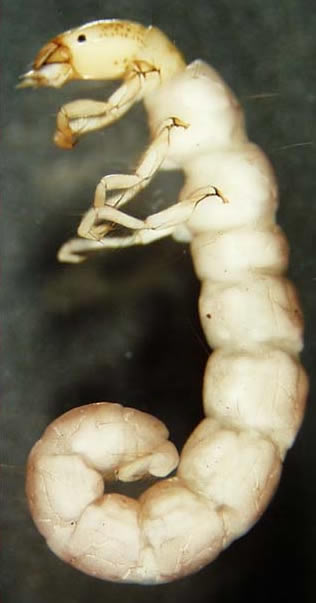  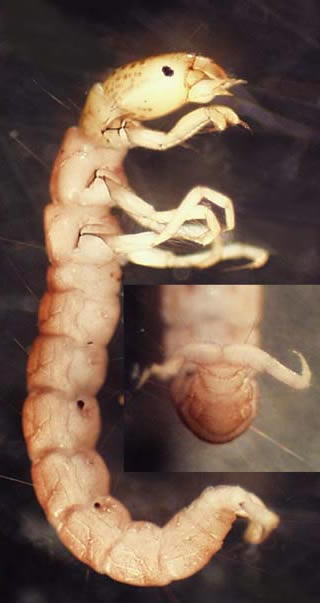 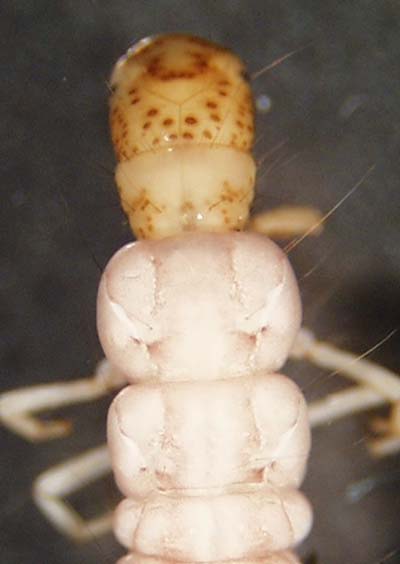  |
||
Hydropsychidae
|
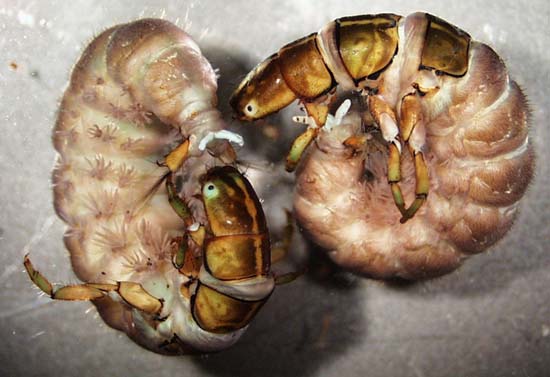  |
||
| Phryganeidae (giant case makers) larval cases are long tubes constructed from dead leaves or bark; larvae have a large, elongated head, usually with longitudinal dorsal stripes; long, single gills all down abdomen; only 1st thoracic segment has well-developed plate. |
 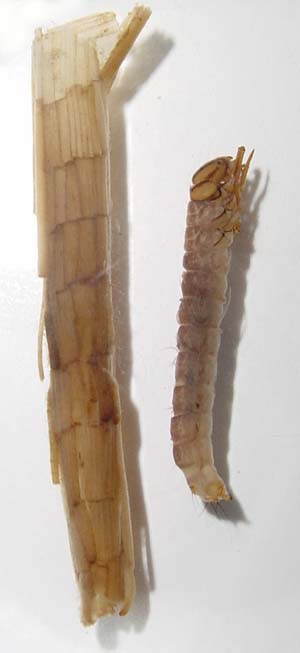 |
| Trichoptera uncommon in wetlands Brachycentridae Calamoceratidae Glossomatidae Lepidostomatidae Molannidae Odontoceridae Philopotamidae Psychomyiidae Rhyacophilidae Sericostomatidae |
|
|
|
Famliy List |
© 2007 Xerces Society
Contact info@xerces.org
